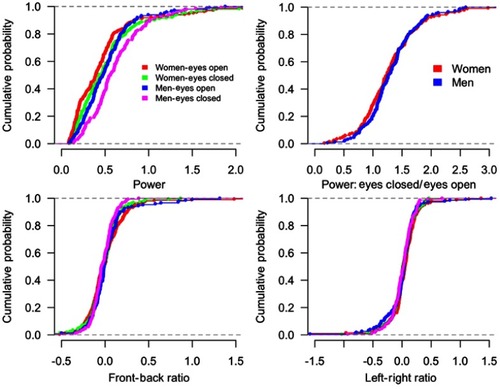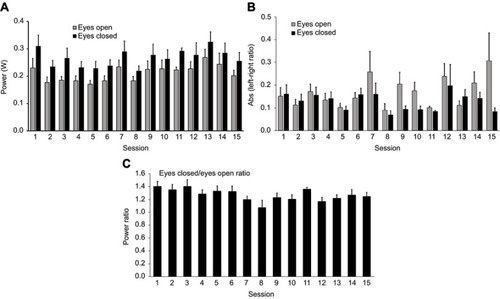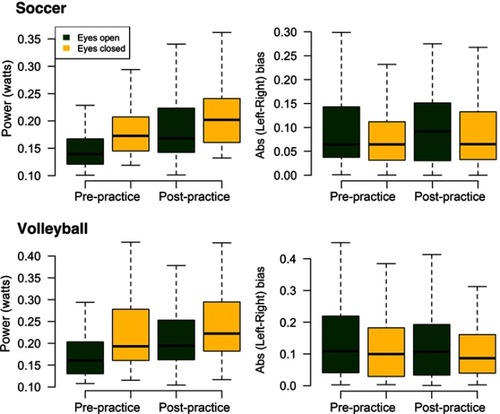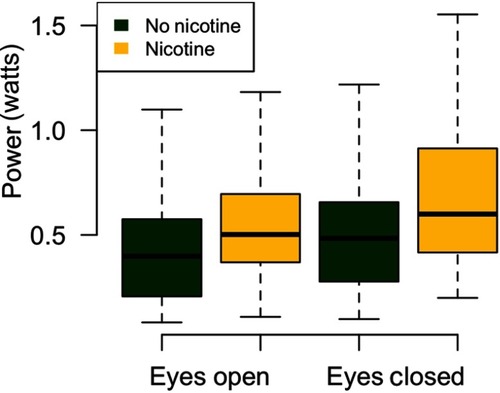Figures & data
Figure 1 Combined head-impact and postural sway monitoring inertial motion unit sensors (A) worn with an athletic headband; and (B) attached to the skin using an adhesive patch.

Figure 2 Cumulative distributions for different measures of postural stability, plotted as a function of eye state and gender. Measures of sway power (in Watts) were significantly different for eyes open (Eo) versus eyes closed (Ec) and as a function of gender. After normalization, the ratio of sway power with Ec/Eo did not differ as a function of gender. The Front-back sway power ratio was significantly different: with eyes closed participants moved more posteriorly. There were no differences in the left-right sway power ratio as a function of gender or eye state.

Table 1 Measurements of sway power and sway power asymmetry (front/back ratio and left/right ratio) as a function of participant gender
Table 2 Influence of participant state variables on measures of sway power and sway power asymmetry (front/back ratio and left/right ratio)
Figure 4 Repeated measures of sway in 22 men’s professional soccer players recorded over 15 sessions spanning 37 days. (A) Sway power; (B) Bias in lateral sway; (C) Eyes closed/eyes open sway power ratio.
Abbreviation: L-R, left-right.

Figure 5 Variability of sway measurements from 22 men’s professional soccer players recorded over 15 sessions spanning 37 days. (A) Sway power; (B) Bias in lateral sway; (C) Eyes closed/eyes open sway power ratio.

Figure 6 The effect of physical activity on sway in two sports. The measures were obtained in college women’s soccer and volleyball teams and reflect repeated measures before and after training sessions over 6 weeks during the fall 2018 season. Sway power increases significantly after physical activity.

Figure 7 The effect of an acute concussion on sway power in a varsity high school football player. Player 4 sustained an in-practice concussion, leading to a significant increase of postural sway post practice (A). Over the next two weeks, there is a clear pattern of recovery to baseline (B).


